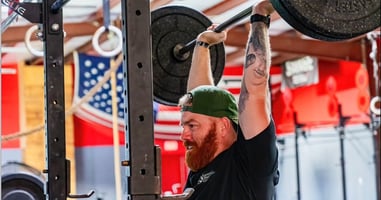Injury recovery is a journey, not just a moment in time. True recovery goes beyond healing; it...
Does Form Really Matter If I’m Not In Pain?
The Importance of Form From An Injury Standpoint
Many patients often wonder if their form truly matters if they aren’t currently experiencing any pain. At Conquer Movement, we emphasize the significance of form through our I3 Model, which illustrates how injuries can develop and persist over time. When considering the importance of form from an injury standpoint, it is essential to understand that improper form leads to incomplete mechanics—this is the first "I" in our model. When mechanics are incomplete, they create imbalances in how we move. These asymmetries present as side to side differences in range of motion, strength, stability and more and result in our second "I," incidents. These incidents are microtraumas that impose stress on various structures in our body. While they may seem minor and often resolve quickly, repeatedly placing our bodies in positions that they aren’t accustomed to, or poorly distributing loads through our joints and connective tissues, can eventually lead to injury—the final "I."
Think of injury as the straw that broke the camel's back, the culmination of numerous incidents that have gone unnoticed. Just as a scab that you keep picking at will eventually bleed, our bodies can only withstand so much before something gives way. Since you can never predict which incident will lead to an injury, it's a risk not worth taking. This also demonstrates the importance of understanding what exactly our incomplete mechanics are and which movements are not being executed properly. If we do not understand where our movement faults lie, then we will continue to perpetuate this injury in a never ending cycle. We need to know how to move properly in order to both correct and prevent injuries.
Form Should Be Intentional
When we talk about form, we need to consider the intention behind the movements we perform. Every exercise has a purpose, and it’s crucial to align your form with that purpose. Think about the muscle group you are trying to engage; if there’s a break in your form, not only do you risk targeting the wrong muscles, but you also compromise the effectiveness of the muscle you aimed to engage. This not only hinders your strength gains and performance but also prevents you from reaching your fullest potential as an athlete.
One analogy we frequently use at Conquer Movement is that of a kinked hose. Visualize your spinal cord as a hose running from the base of your skull with nerve endings that travel all the way down to the tips of your toes. The nerves from that branch off from your spinal cord transmit signals to all of your muscles that facilitate movement. If there’s a kink in that hose, the output to the muscles is reduced—just as water flow decreases with a kinked hose. Therefore, if your body isn’t properly positioned, you’ll lose force output to the very muscles you intend to use. This misalignment can lead to poor movement patterns, decreased athletic performance, and ultimately injuries.
Moreover, maximizing strength gains can also serve as a proactive measure against injuries. When you focus on form and positioning, you create a solid foundation for your movements, allowing you to train safely and effectively. For all athletes, whether seasoned or just starting, prioritizing form is not just beneficial; it’s essential.
Form and Rehab Exercises
Rehabilitation exercises also demand intentional movement. If we perform rehab movements with improper form, we may inadvertently reinforce incomplete mechanics and improper loading. This can prolong the duration of pain and create a vicious cycle of injury. One critical aspect of preventing re-injury is identifying and correcting incomplete mechanics, making it imperative to have a performance-based physical therapist guiding you through your rehabilitation journey.
At Conquer Movement, our trained eyes can spot even the most subtle movement faults, and we understand the nuances involved in each exercise. Sometimes, a minor correction can mean the difference between effectively loading the intended muscle or straining it further. This is why many individuals who attempt to rehab their own injuries often find themselves falling short; without the expertise and keen observation of a professional, it's easy to overlook critical aspects of form that could expedite healing. There are definitely some great resources for rehab exercises on social media and on the internet, but they are created as an umbrella exercise that will fit everyone. Rehab exercises are not a one-size-fits-all and that is why it is important to find a professional who understands the nuances of each individual exercise and individualizes that exercise to each athlete.
The Bigger Picture: Form Beyond Pain
It’s important to recognize that maintaining proper form isn’t solely about avoiding pain or injuries; it’s also about fostering overall health and performance. Good form can enhance your athletic capabilities, improve efficiency in your movements, and promote longevity in your physical activities. Additionally, focusing on form can enhance your awareness of body mechanics, leading to more informed decisions in your training regimen.
Proper form plays a pivotal role in your physical development. Whether you’re looking to lift heavier weights, run faster, or simply enjoy a more active lifestyle, the foundation built through intentional movement can propel you toward achieving those goals.
Conclusion
In conclusion, the question of whether form matters if you’re not in pain is a resounding yes. Prioritizing proper form can significantly impact your performance and injury prevention. If you’re interested in improving your form, we invite you to take advantage of our thorough movement analysis here at Conquer Movement. Additionally, if you're dealing with an injury and want to ensure your rehabilitation is on the right track, schedule a free discovery call with one of our doctors. Your body will thank you for it!
Dr. Kylie Miller
Performance Physical Therapist
Wilmington, NC
Follow here for more performance tips: @conquermovementpt






Leave A Comment: